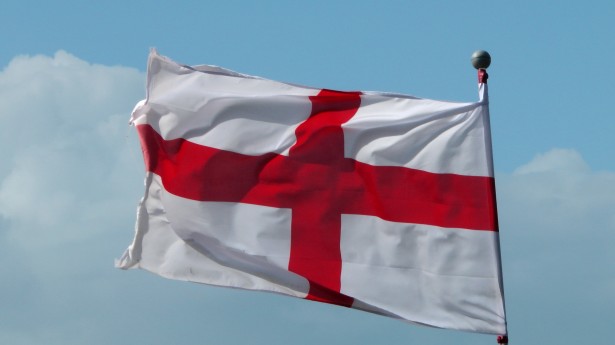Birmingham City Council has hired night-shift contractors to remove England and Union flags from lampposts and other public infrastructure across the city in October, escalating a citywide effort to strip unauthorised attachments after months of mass flag-raising that has spread nationwide and stirred political argument about patriotism, safety and public order.
Recruitment notices posted by labour agencies working with Kier Transportation, the council’s highways contractor, stated the city was seeking multiple mobile elevating work platform (MEWP) operators to “support removal of unauthorised attachments (such as flags) from public buildings and infrastructure” on overnight shifts from 20:00 to around 05:00, with teams working in pairs and pay rates advertised at up to £25 per hour. The listings, dated 1–3 October, described a short-term programme running through 31 October, with potential extension “depending on project progress.”
Credit where credit's due, massive shout out to whoever decked out the B32 in Birmingham with all these flags. Absolutely smashing it, take a bow. 🇬🇧👌🏻 #RaiseTheColours pic.twitter.com/2gRAocgDB6
— David Poulden Esq (@DavidPoulden) September 7, 2025
The council said the removals are driven by safety and maintenance requirements, including an ongoing programme to upgrade street lighting to LEDs. In guidance carried by sector outlet LocalGov, a Birmingham City Council spokesperson warned that “people who attach unauthorised items to lampposts could be putting their lives and those of motorists and pedestrians at risk,” adding that around 200 advertising banners and flags had already been taken down this year so lighting works could proceed safely and columns remain clear. “Placing unauthorised attachments on street furniture, particularly tall structures like lamp posts, can be dangerous,” the statement said.
The stepped-up removals in Birmingham follow a summer in which thousands of red-and-white St George’s flags and Union Jacks were fixed to lampposts, bridges and roundabouts in English cities and towns, often organised via social media channels linked to a loose network calling itself “Operation Raise the Colours.” Supporters say the displays are intended to celebrate national pride, while opponents—including several local authorities—argue that the activity has in places blended with far-right agitation and, at a minimum, contravenes laws and policies governing highways infrastructure.
The controversy has not been confined to one party or city. Durham County Council, controlled by Reform UK, said in late August it had been “left with no choice” but to remove bunting and flags after a risk assessment concluded strong rope used in some displays could bring down poles if struck by a high-sided vehicle. “We understand and respect the community’s desire to express national pride,” the council said, “but it is important to ensure such expressions do not compromise public safety.”
Elsewhere, Tower Hamlets Council in east London said it maintains a standing policy to remove flags attached to council infrastructure without permission, stressing that residents are free to display flags on private property. “We apply this policy consistently to all flags,” a spokesperson said in an August statement that urged the public not to climb street furniture.
Political criticism has focused heavily on Birmingham, where campaigners in areas including Weoley Castle and Northfield raised funds and coordinated mass installations over the summer. As the council removed flags from lampposts, some opponents accused officials of selective enforcement by allowing other flags to remain in parts of the city; the authority said its actions are content-neutral and based on safety and maintenance policy. In mid-August, national reporting highlighted opposition councillors’ claims that some politically charged flags had been left in place for extended periods, while reiterating the council’s position that unauthorised attachments on lampposts are removed in the ordinary course of work.
City officials argue the sharper enforcement is necessary to manage immediate hazards and to protect the street-lighting upgrade timetable. In communications about the lighting programme and in sector briefings, the council framed the removals as routine highway safety work and reminded residents that attaching items to lampposts risks obstructing maintenance and endangering the public. The authority has also pointed to the legal framework that treats many such fixtures as “street furniture” subject to the Highways Act 1980 and related regulations.
The situation in York underscores how the debate has broadened from safety into community cohesion and policing priorities. On 11 September, York City Council said a surge in flag flying had coincided with racist incidents, including abuse of children on school runs and racist graffiti attacks on local businesses, and announced it would remove England, Union and other flags from public infrastructure across the city. “Many in our communities are feeling threatened and uncomfortable,” council leader Claire Douglas said. “Children have been racially abused by adults on their way to school and council staff are being abused simply for doing their jobs of removing graffiti from our roads. This cannot go on.”
The York authority estimated the clean-up would cost about £250,000—a figure that it said equated to funding more than 3,000 pothole repairs or 12,000 hours of adult social care. The group “Flag Force,” which had claimed responsibility for hundreds of installations in the city, defended the displays and condemned racist incidents, with co-founder Joseph Moulton telling local media that “British people do not need permission to fly their flag in their country,” while adding that “the racist incidents are deplorable.”
With removals under way or planned in a number of council areas, authorities and contractors have reported intimidation in some locations. In Brighton and Hove, a council-contracted team paused work after staff faced abuse while taking down flags from the seafront; an independent councillor said contractors had insisted they would not proceed without police present. Brighton and Hove City Council said unauthorised flags on highways would be removed “in line with the 1980 Highways Act.”
🚨BREAKING: Birmingham City Council has stated that English and British flags "could put lives at risk," as council workers are removing recently erected flags.
Disgraceful. pic.twitter.com/1V6GKZhsBF
— God Save Great Britain (@GSGB01) August 14, 2025
The wave of flag displays has produced markedly different responses from councils around the country. Some, including Birmingham, Tower Hamlets, Brighton and Durham, have ordered removals citing safety, legal and maintenance concerns. Others have taken a hands-off approach or publicly signalled support for displays within the rules. The debate has also drawn in national politicians, with senior figures across parties emphasising that the national flag belongs to everyone while local authorities reiterate that permission is required to attach anything to public fixtures.
In Birmingham, the October programme to dismantle attachments marks the most organised phase yet of a response that for months consisted of ad-hoc removals during related works. Recruitment adverts show crews scheduled to start from a central depot each evening, travel to multiple sites, and use MEWPs to reach high installations, with safety-critical certifications and drug and alcohol testing listed among the prerequisites. The jobs were advertised as short-term and paid either PAYE or umbrella rates, with operators instructed to work in pairs and sometimes alongside a permanent Kier staff member.
Local government sources and industry notices emphasise that the category of “unauthorised attachments” goes beyond national flags to include bunting, banners and ad hoc signage. Councils have argued that climate-exposed attachments can become loose projectiles, that ties and ropes can snag vehicles or stress columns, and that lamp columns are designed to strict load specifications that do not account for unapproved fixtures. Birmingham’s statement that around 200 items had already been removed this year underlines the scale of the task before the recent proliferation of flag activity.
The underlying campaign has often overlapped with demonstrations around asylum accommodation and anti-immigration activism this summer, according to researchers and press reporting. While many residents who joined local flag-raising groups described their participation as apolitical and rooted in pride, monitoring groups and several councils linked the sudden spread of displays to attempts by agitators to provoke confrontation, citing incidents of racist abuse and vandalism in multiple towns. Those tensions have sharpened the practical questions facing councils about when and how to intervene, what risks to prioritise, and how to protect staff confronted by organised resistance to removals.
Officials in York and other areas have stressed that removing flags from public infrastructure does not prevent individuals from flying flags on homes or businesses. Tower Hamlets’ guidance used near-identical language, stating that flags on private property are permitted, while those attached to council infrastructure without permission are removed as part of routine maintenance. In Brighton, the council cited the Highways Act in notifying residents that unauthorised highway displays would be taken down.
Back in Birmingham, the practicalities of the October operation reflect lessons drawn from other cities where contractors have faced obstruction. The job briefs’ emphasis on pairs of operators, overnight working, and formal safety accreditation suggest the council and its partners expect to encounter difficult conditions, from traffic risks to public confrontation. In Brighton, contractors’ warning that they would not proceed without police support led to a pause; in York, the council highlighted the potential drain on resources, setting the anticipated £250,000 bill against other services to frame the trade-offs.
While accusations of selective enforcement continue—most prominently claims that some councils acted faster against St George’s and Union flags than against other political banners—authorities insist their policies are content-neutral. Reporting last month on Birmingham highlighted opposition complaints about Palestinian flags in the city, as well as the council’s response that removals require risk assessments and, in some cases, police support to safely execute. The city maintains that its current campaign targets “unauthorised attachments” of any kind on public property and is intended to restore infrastructure to a safe condition.
As the October removals proceed, the national argument shows little sign of cooling. In Durham, the Reform-run council’s safety-based decision to remove flags underscored that the issue crosses party lines. In London and along the south coast, councils are weighing the balance between safety and sensitivity while managing staff safety; in York and other northern cities, authorities are pairing removals with appeals for community calm and reminders that legally flown flags remain welcome on private premises.
For Birmingham, the test will be whether a concentrated month of night-time enforcement clears highway fixtures without provoking disorder or simply triggers another cycle of installations and takedowns. The city’s message mirrors that of other local authorities: remove what is unlawful on public infrastructure; do it safely; keep crews out of harm’s way; and reiterate that expressions of national pride do not confers a licence to attach objects to council assets. With recruitment complete and crews in place, the council is betting that a focused operation will reset the streetscape ahead of the winter maintenance season and allow the lighting upgrade to continue without disruption.










